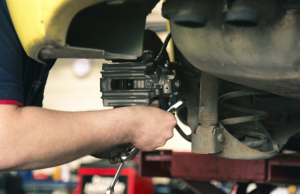Having a car is a tremendous privilege, but comes with great responsibility. Here are some tips to bear in mind to make sure your car’s maintenance is up to date.
- Check Your Air Filter
Whenever you want to pop on the air conditioner, you will want to make sure the filters in your car do not suffer much wear and tear. It is recommended that you change them every 12 months or so to prevent breathing in unhealthy air.
- Spark Plugs
Any issues that you may face with your engine can most likely be attributed to the spark plugs. Spark plugs are typically good for around 30,000 miles.
- Brakes
Cars that last longer typically have strong brakes. Every two years, ensure that your brakes are replaced. Checking your brake fluid can also be helpful.
- Cover It
Covering your car can ensure that the paint stays fresh and that your car remains stylish. This is more of an aesthetic tip, but it could save you money.
- Practice Better Driving
You could save money that you’d have to pay for damages to car by simply driving better and avoiding accidents. It reflects well on you, and saves you money in the long run.
- Exterior Engine Cleaning
Cleaning the exterior of your car can prevent excess debris from entering the internal compartment. Remove any debris or garbage that should not be there.
7. Oil
Your oil should be amber in color, and you can refer to your owner’s manual in regards to when and how often your oil should be changed.
- Headlights
The headlights provide you with safety, allowing you to see what’s up ahead of you at night. Make sure the battery is up to date and that it is actually working before driving off.
- Windshield Wipers
The windshield wipers are one of the more vulnerable parts of your car that can wear out quickly. However, they can be easily replaced with a wiper blade.
- Tire Rotation
The general rule of thumb is to have your tires rotated and properly aligned every 5,000 miles. Doing so will also help your car’s fuel economy as well.






